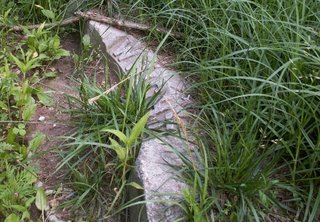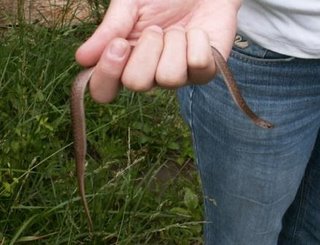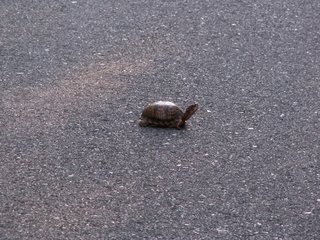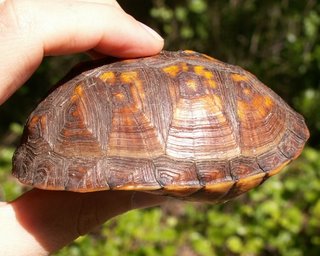The east side’s plots are mostly grown over with grass, and these cemetery meadows do not look entirely inappropriate. The taller headstones are shrouded by the grass and are visible by only their top few inches until you draw close. From a few feet away the grass works like a curtain, and the marker stands alone. It’s not the effect the now-deceased or their family anticipated when they chose the plot, but at least it’s dignified.

The west side has a few meadow sections, but too many are dominated by the bigger weeds. Small trees of heaven jut out from behind and between headstones, knocking them off their bases another centimeter each year. Some plots are invisible under young sassafras and vines. Obelisks are consumed by rose bushes that once decorated their feet. Even the open areas look like savannah, the headstones almost incidental.

Jen found our first two brown snakes (Storeria dekayi dekayi) in the west section of the cemetery under a board alongside a path that runs through a thicket of Japanese knotweed.

Japanese knotweed is a horribly invasive exotic plant that grows in surging walls of green that choke out everything else. We had found redback salamanders (Plethodon cinereus) under these same boards and the neighboring tire piles at the beginning of the winter, and the ground had looked nothing like this – just knocked-over canes and mud. On Sunday (June 11) I could see no indication that there were people buried back in there until I rounded the corner and saw the step up to the Wright plot.

The snakes were together under this board.


This is the prettier one, though Jen claims to notice no major difference between the brown snakes I say are pretty and the ones that I think are dull.

Here’s the third snake, one that I found (Jen’s really been outclassing me lately) under a log in this meadow-plot on the other side of the cemetery. Click on the picture and admire this little gem.

See how the black spots sharply define the edge of that smooth, pale gray back against the rougher, browner flanks? There’s something really beautiful in that subtle contrast, right?
Their rear ends’ plumpness is beyond dispute, even if you deny that some are more beautiful than the others. Here’s one of the first two in Jen’s hand.

I’m pretty sure we’re mostly finding gravid (pregnant) females. I’m curious if we’ll find many in another month or so when they’ll all have dropped their litters.
By the way (see the comment below), the Mount Moriah Cemetery has a website at which you can learn more about its history: http://mountmoriahcemetery.org/
The weather Sunday evening was partly cloudy and the temperature falling through the high to mid 60s.
Totals:
3 brown snakes








